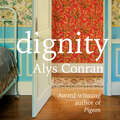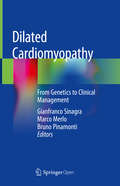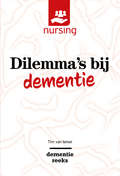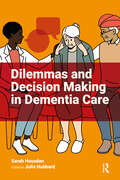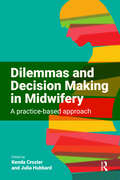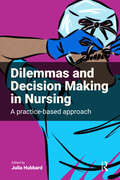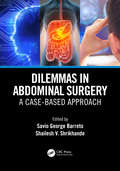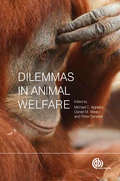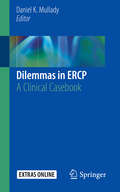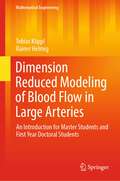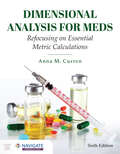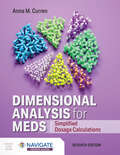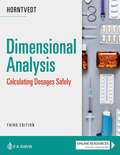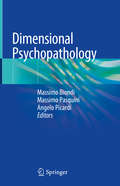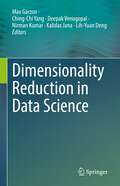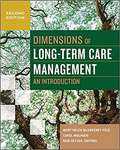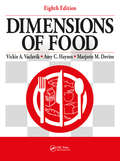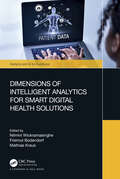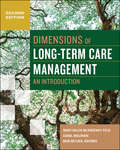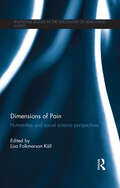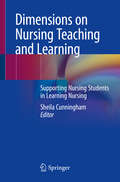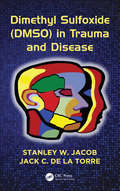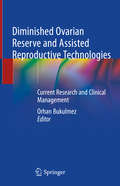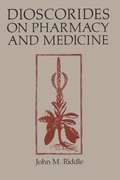- Table View
- List View
Dignity: From the award-winning author of Pigeon
by Alys ConranMagda lives alone in her a huge house by the sea. Bad tempered and elderly, Magda does not need help from anyone, despite being wheelchair bound. With her sharp tongue, she gets through carers at a rate of knots, until Susheela arrives. And Susheela, it turns out, is in even more trouble than Magda. Still reeling from the recent death of her mum and trying to prop up her dad who is at risk of losing the family business, she finds she is pregnant. The future suddenly looks uncertain and frightening. But Magda and Susheela strike up an unlikely and sometimes uneasy friendship. Magda finds herself thinking back to her early childhood in colonial India before she was sent "home" to England; a childhood filled with servants and privilege but also terrible secrets. We also follow the story of her mother, Evelyn, once a warm hearted, and free spirited school teacher who slowly has all life and optimism ground away by a controlling husband and the misery of being a respectable member of the ruling classes. What becomes clear is that Evelyn searched for home for a long time, just like Magda, just like Susheela. And Magda begins to realise that home might not be a fortress to be ferociously defended, but may mean something else altogether. Thoughtful, clever, and beautifully observed Dignity considers the legacy of the Raj in Britain today, but more importantly what it means to belong to a place and to other people.(p) Orion Publishing Group Ltd 2019
Dilated Cardiomyopathy: From Genetics to Clinical Management
by Gianfranco Sinagra Bruno Pinamonti Marco MerloThis open access book presents a comprehensive overview of dilated cardiomyopathy, providing readers with practical guidelines for its clinical management. The first part of the book analyzes in detail the disease’s pathophysiology, its diagnostic work up as well as the prognostic stratification, and illustrates the role of genetics and gene-environment interaction. The second part presents current and future treatment options, highlighting the importance of long-term and individualized treatments and follow-up.Furthermore, it discusses open issues, such as the apparent healing phenomenon, the early prognosis of arrhythmic events or the use of genetic testing in clinical practice.Offering a multidisciplinary approach for optimizing the clinical management of DCM, this book is an invaluable aid not only for the clinical cardiologists, but for all physicians involved in the care of this challenging disease.
Dilemma's bij dementie: Waarden wegen voor goede zorg (Nursing-Dementiereeks)
by Tim Van IerselDit boek brengt de dilemma’s in beeld waarvoor je komt te staan als je zorgt voor iemand met dementie. Deze dilemma’s worden besproken aan de hand van acht waarden waaruit het dilemma voortkomt, zoals autonomie en veiligheid. Het boek richt zich op verzorgenden en verpleegkundigen (in opleiding).
Dilemmas and Decision Making in Dementia Care
by Sarah HousdenThis book is invaluable to nurses and all health and social care practitioners working with people living with dementia in a variety of contexts. It presents a series of true-to-life case studies tackling the ethical and practical dilemmas of dementia care and how to use theoretical approaches to come to potential solutions.The reader is encouraged to explore evidence-based approaches to practice, based on the professional reasoning and experience of the practitioner and the emotional psychological and practical needs of the person living with dementia. Key themes running through case studies include: effective communication, person-centred practice, social citizenship, strengths-based approaches and relationship-focused support, as well as organisational culture. Each case study provides readers with opportunities to experience and discuss clinical dilemmas in a safe space with an annotated thinking-aloud framework that allows them to unpack the elements of each situation so as to develop a range of solution-focused perspectives in order to overcome barriers and deliver best practice.
Dilemmas and Decision Making in Midwifery: A Practice-based Approach
by Kenda Crozier Julia HubbardThis book teaches students and educators in the midwifery field how to tackle dilemmas and decision making. Combining theory and practice, and promoting critical thinking, this book provides key knowledge alongside case studies of how to approach real-life dilemmas in midwifery.Written and edited by experts in the field, this book gives midwives and student midwives the opportunity to experience a systematic approach to facing dilemmas and decision making through the use of clinical scenarios. This is done in a safe space through an annotated thinking aloud framework where students and educators can have open discussions. Student midwives and practitioners are given the opportunity to explore professional dilemmas they might not have witnessed and uncover new theories that will influence future decisions. Linked to the 2019 NMC Standards for Midwifery, this book is essential reading for all stages of the midwifery career including those supporting students, coordinating care teams and those supporting multi-cultural communities. The midwives' personal reflections explore best practice and take account of other professional perspectives, including facilitators and barriers to interdisciplinary working. Learners will be able to consider a number of factors including concepts and theories, ethics and legal accountability, to explore how they interplay in making decisions.
Dilemmas and Decision Making in Nursing: A Practice-based Approach
by Julia HubbardLooking for a book that will help you hone your decision-making skills as a nursing student or practitioner? Look no further than this innovative volume. It provides a collection of engaging fictional scenarios that explore how nurses tackle clinical dilemmas, weigh up options and make good decisions based on a sound understanding of theory related to practice.More than just a simple collection of case studies, this book offers a comprehensive thinking framework that will allow you to truly understand how theory can be applied to practice. It provides opportunities to discuss clinical dilemmas in a safe space in which you can explore your own values and beliefs, apply professional knowledge and consider new approaches to nursing. Featured in these clinical scenarios are professional dilemmas you may not have yet encountered in your practice to help you uncover new methods of decision-making. It explores best practice and takes account of other professional perspectives, including challenges and barriers to interdisciplinary working. After using this book you will feel confident in your problem-solving and decision-making abilities.
Dilemmas in Abdominal Surgery: A Case-Based Approach
by Savio George Barreto Shailesh V. ShrikhandeThis book covers the management of surgical diseases "through the eyes" of a clinician by providing an evidence-based approach to specific clinical dilemmas. The chapters take the reader through a step-by-step "decision-making" approach to commonly encountered, but difficult to manage, situations where the editors share their rationale behind the process. Emphasis is placed on the use of tables and algorithms to simplify understanding. They aim to empower the readers with the ability to manage complex abdominal surgery scenarios in a streamlined manner, thus improving the care and outcome of patients. Key Features Targets specific, difficult to manage scenarios Provides expert opinion/advice on how to tackle tricky situations Covers both benign and malignant cases Discusses an evidence-based approach * Examines surgical dilemmas through illustrations
Dilemmas in Animal Welfare
by Jeffrey Rushen Clare Palmer Peter Sandøe Maria J Maria J Ngaio J Ngaio J Daniel Weary Michael Appleby Carla Carla Pauline Pauline Anna Olsson Nuno H Nuno H Professor Sandra A Edwards Manuel Magalhães-Sant’ana Sandra Sandra Anne De Passillé Anne Marie Anne MarieThere are many ongoing debates within and about the subject of animal welfare. This book distils some of the major themes of current debate into one volume, edited by internationally known names in the field of animal welfare. Each chapter is written by one or more leading experts who discuss, in an even-handed way, a provocative topic that will be of interest to anyone concerned with animal welfare. Issues covered include tail docking, farm animal production, neutering of feral cats and the need to conserve habitats of native wild animals in the face of threats from non-native species. Chapters address the different values and priorities involved in dealing with these issues, including scientific and more explicit ethical approaches. Each chapter ends with questions for discussion that may help readers to engage with these dilemmas.
Dilemmas in Animal Welfare
by Jeffrey Rushen Clare Palmer Maria J Maria J Ngaio J Ngaio J Carla Carla Pauline Pauline Anna Olsson Nuno H Nuno H Professor Sandra A Edwards Sandra Sandra Anne De Passillé Anne Marie Anne Marie Manuel Magalhães-Sant’AnaThere are many ongoing debates within and about the subject of animal welfare. This book distils some of the major themes of current debate into one volume, edited by internationally known names in the field of animal welfare. Each chapter is written by one or more leading experts who discuss, in an even-handed way, a provocative topic that will be of interest to anyone concerned with animal welfare. Issues covered include tail docking, farm animal production, neutering of feral cats and the need to conserve habitats of native wild animals in the face of threats from non-native species. Chapters address the different values and priorities involved in dealing with these issues, including scientific and more explicit ethical approaches. Each chapter ends with questions for discussion that may help readers to engage with these dilemmas.
Dilemmas in ERCP: A Clinical Casebook
by Daniel K. MulladyThis clinical casebook provides a comprehensive yet concise state-of-the-art review of endoscopic retrograde cholangiopancreatography (ERCP). Presented in a case-based format, each case focuses on a clinical dilemma commonly encountered when performing ERCP. Case scenarios include difficult biliary cannulation, post-ERCP pancreatitis, ERCP in recurrent acute pancreatitis, ERCP during pregnancy, and ERCP in pediatric patients. The book also features online videos demonstrating the use of ERCP in various situations. Written by experts in the field, Dilemmas in ERCP: A Clinical Casebook is a valuable resource for gastroenterologists and interventional endoscopists in achieving successful outcomes when performing ERCP.
Dimension Reduced Modeling of Blood Flow in Large Arteries: An Introduction for Master Students and First Year Doctoral Students (Mathematical Engineering)
by Rainer Helmig Tobias KöpplThis monograph contains an in-depth and coherent treatment of dimension-reduced modeling of blood flows on the level of large vessels (macrocirculation). The authors reduce the complexity by combining a one-dimensional Navier-Stokes equation and a simplified FSI-concept. The influence of omitted vessels, which are subsequent to the outlets of larger vessels, is accounted for by systems of ordinary differential equations (0D models). The target audience primarily comprises research experts in the field of biomedical engineering, but the book may also be beneficial for graduate students alike.
Dimensional Analysis for Meds: Refocusing on Essential Metric Calculations
by Anna M. CurrenThe Sixth Edition of Dimensional Analysis for Meds: Refocusing on Essential Metric Calculations has been streamlined to present only the essential information.
Dimensional Analysis for Meds: Simplified Dosage Calculations
by Anna M. CurrenDosage calculation can be very challenging and intimidating for students. However, renowned author and educator, Anna Curren applies her experience, knowledge, and proven method to take the fear-factor out of manual math in Dimensional Analysis: Simplified Dosage Calculations, Seventh Edition. She breaks down the subject using dimensional analysis which reduces all calculations into a single, easy-to-solve equation. Furthermore, her conversational writing style brings the students to a safe place in the often-intimidating realm of math. The updated Seventh Edition presents only the essential information. The first section includes a chapter with an overview of the metric system; as Curren states, 98% of all calculations involve metric measures. The text is structured to feature content in small instructional steps followed by assessments to reinforce what has been learned.
Dimensional Analysis: Calculating Dosages Safely
by Tracy HorntvedtMake dosage calculations easier to master with dimensional analysis. Dimensional analysis is an easy, systematic approach that shows you how to master simple to complex calculations with consistency and accuracy and reduce medication errors to ensure that drugs are administered safely and documented correctly. It eliminates the need to use other methods or perform lengthy, multi-step calculations.
Dimensional Psychopathology
by Massimo Biondi Massimo Pasquini Angelo PicardiThis book presents an innovative approach to clinical assessment in psychiatry based on a number of psychopathological dimensions with a presumed underlying pathophysiology, that are related to fundamental phenomenological aspects and lie on a continuum from normality to pathology. It is described how the evaluation of these dimensions with a specific, validated rapid assessment instrument could easily integrate and enrich the classical diagnostic DSM-5 or ICD-10 assessment. The supplemental use of this dimensional approach can better capture the complexity underlying current categories of mental illness. The findings from a large patient sample suggest how this assessment could give a first glance at how variable and multifaceted the psychopathological components within a single diagnostic category can be, and thereby optimise diagnosis and treatment choices. Being short and easy to complete, this dimensional assessment can be done in a busy clinical setting, during an ordinary psychiatric visit, and in an acute clinical context, with limited effort by a minimally trained clinician. Therefore, it provides interesting and useful information without additional costs, and allows research work to be performed even in difficult settings.
Dimensionality Reduction in Data Science
by Max Garzon Ching-Chi Yang Deepak Venugopal Nirman Kumar Kalidas Jana Lih-Yuan DengThis book provides a practical and fairly comprehensive review of Data Science through the lens of dimensionality reduction, as well as hands-on techniques to tackle problems with data collected in the real world. State-of-the-art results and solutions from statistics, computer science and mathematics are explained from the point of view of a practitioner in any domain science, such as biology, cyber security, chemistry, sports science and many others. Quantitative and qualitative assessment methods are described to implement and validate the solutions back in the real world where the problems originated.The ability to generate, gather and store volumes of data in the order of tera- and exo bytes daily has far outpaced our ability to derive useful information with available computational resources for many domains.This book focuses on data science and problem definition, data cleansing, feature selection and extraction, statistical, geometric, information-theoretic, biomolecular and machine learning methods for dimensionality reduction of big datasets and problem solving, as well as a comparative assessment of solutions in a real-world setting.This book targets professionals working within related fields with an undergraduate degree in any science area, particularly quantitative. Readers should be able to follow examples in this book that introduce each method or technique. These motivating examples are followed by precise definitions of the technical concepts required and presentation of the results in general situations. These concepts require a degree of abstraction that can be followed by re-interpreting concepts like in the original example(s). Finally, each section closes with solutions to the original problem(s) afforded by these techniques, perhaps in various ways to compare and contrast dis/advantages to other solutions.
Dimensions Of Long-term Care Management: An Introduction
by Mary Helen McSweeney-Feld Carol Molinari Reid M. OetjenThe field of long-term care is experiencing significant growth and near-constant change. Older adults and people with disabilities today make up a larger segment of society than ever before, and with this shift in demographics comes an increased demand for long-term services and supports. Technological advancements and evolving consumer preferences are reshaping the services that people want and need, and new models of care reflect a shift in emphasis from institutional to community-based settings. The Affordable Care Act (ACA) and other reform efforts have introduced new regulations, requirements, and pressures for long-term care providers; however, they have also brought new opportunities. This introductory book examines the various dimensions of long-term care and explores the facets of management essential to success in this rapidly changing environment. The first part of the book provides an overview of key definitions, settings, policy issues, and trends in the delivery of long-term services and supports. The second part relates aspects of management—including leadership, human resources, marketing, facility management, regulatory and legal issues, and financing—to long-term care. Significantly revised and updated, this edition includes four new chapters, addressing the following topics: Delivery of long-term services and supports under the ACA Transitions between acute care, residential long-term care, and home and community-based care settings The implications of global trends in long-term care policies and services Quality improvement tools and reform-driven requirements for safety and transparency Additional updates for this edition focus on specialized care for individuals with chronic and disabling conditions, new technologies that maintain patients’ health information and enhance communication, and the challenges in assembling and retaining an effective direct care workforce.
Dimensions of Food
by Vickie A. Vaclavik Amy HaynesFollowing its bestselling predecessor, Dimensions of Food, Eighth Edition, provides beneficial classroom and independent, instructive material for students. Instructors will find that this textbook's organization makes it easy to use and very flexible for teaching. A variety of stimulating experiences allow the student to explore and comprehend the numerous dimensions of food. Part I of this lab manual contains an analysis of economic, nutritional, palatability, chemical, sanitary, and food processing dimensions of food. Part II allows students to analyze the structural and functional properties of foods such as starches, fruits and vegetables, eggs, dairy, meat, poultry and fish, fats and oils, sweeteners, and baked goods. Part III features information on microwave cooking, and Part IV concludes with beneficial ideas on meal planning. All chapters in this informative and interactive insight into food science contain learning objectives, exercises, recipes, summary questions, and updated Dietitian's Notes. Contains several helpful Appendices on topics including: Food Guides and Dietary Guidelines, Food Equivalents, Portions, Food Allergens, Food Additives, Legislation, Foodborne Illness, Cooking Terms, Herbs and Spices, and Plant Proteins.
Dimensions of Intelligent Analytics for Smart Digital Health Solutions (Analytics and AI for Healthcare)
by Nilmini Wickramasinghe Freimut Bodendorf Mathias KrausThis title demystifies artificial intelligence (AI) and analytics, upskilling individuals (healthcare professionals, hospital managers, consultants, researchers, students, and the population at large) around analytics and AI as it applies to healthcare. This book shows how the tools, techniques, technologies, and tactics around analytics and AI can be best leveraged and utilised to realise a healthcare value proposition of better quality, better access and high value for everyone every day, everywhere. The book presents a triumvirate approach including technical, business and medical aspects of data and analytics and by so doing takes a responsible approach to this key area. This work serves to introduce the critical issues in AI and analytics for healthcare to students, practitioners, and researchers.
Dimensions of Long-Term Care Management: An Introduction, Second Edition (Gateway to Healthcare Management)
by Mary Helen McSweeney-FeldInstructor Resources: Test bank, presentation PowerPoint slides, answers to end-of-chapter and case study questions, a sample course syllabus, and a transition guide to the new edition. The field of long-term care is experiencing significant growth and near-constant change. Older adults and people with disabilities today make up a larger segment of society than ever before, and with this shift in demographics comes an increased demand for long-term services and supports. Technological advancements and evolving consumer preferences are reshaping the services that people want and need, and new models of care reflect a shift in emphasis from institutional to community-based settings. The Affordable Care Act (ACA) and other reform efforts have introduced new regulations, requirements, and pressures for long-term care providers; however, they have also brought new opportunities. This introductory book examines the various dimensions of long-term care and explores the facets of management essential to success in this rapidly changing environment. The first part of the book provides an overview of key definitions, settings, policy issues, and trends in the delivery of long-term services and supports. The second part relates aspects of management—including leadership, human resources, marketing, facility management, regulatory and legal issues, and financing—to long-term care. Significantly revised and updated, this edition includes four new chapters, addressing the following topics: Delivery of long-term services and supports under the ACA Transitions between acute care, residential long-term care, and home and community-based care settings The implications of global trends in long-term care policies and services Quality improvement tools and reform-driven requirements for safety and transparency Additional updates for this edition focus on specialized care for individuals with chronic and disabling conditions, new technologies that maintain patients’ health information and enhance communication, and the challenges in assembling and retaining an effective direct care workforce.
Dimensions of Pain: Humanities and Social Science Perspectives (Routledge Studies In The Sociology Of Health And Illness Ser.)
by Lisa Folkmarson KällPain research is still dominated by biomedical perspectives and the need to articulate pain in ways other than those offered by evidence based medical models is pressing. Examining closely subjective experiences of pain, this book explores the way in which pain is situated, communicated and formed in a larger cultural and social context. Dimensions of Pain explores the lived experience of pain, and questions of identity and pain, from a range of different disciplinary perspectives within the humanities and social sciences. Discussing the acuity and temporality of pain, its isolating impact, the embodied expression of pain, pain and sexuality, gender and ethnicity, it also includes a cluster of three chapters discusses the phenomenon and experience of labour pains. This volume revitalizes the study of pain, offering productive ways of carefully thinking through its different aspects and exploring the positive and enriching side of world-forming pain as well as its limiting aspects. It will be of interest to academics and students interested in pain from a range of backgrounds, including philosophy, sociology, nursing, midwifery, medicine and gender studies.
Dimensions on Nursing Teaching and Learning: Supporting Nursing Students in Learning Nursing
by Sheila CunninghamThe book presents five significant areas of learning within professional programmes of preparation most applicable to student nurses and midwives in their pre-registration education but also with relevance to other learners on healthcare related disciplines. This volume has emerged from several sources: the editor’s role as a Director for Learning and Teaching in Adult, Child Nursing and Midwifery and also from an EU funded project looking at quality benchmarks and assuring clinical learning environments (HEALINT). The Francis Report (Francis 2013) and the Shape of Caring Report (Willis 2015) highlighted challenges related to practice learning and mark a renewed focus in its overall significance (Morley et al 2017). In addition to discussions regarding models of support in practice, there is also a clear emphasis on the need for nurses to have the knowledge and skills to undertake more flexible roles and an increasing requirement for nurses to have higher order knowledge and skills at the point of registration, according to the UK Nursing and Midwifery Council (NMC 2017). The book will meet these new educational needs especillay for educators working in Nurse and midwife colleges.The new standards of proficiency for pre-registration nursing were published in 2018, with all higher education institutions (HEIs) approved to deliver the programme from September 2019. This creates a demand for a publication which explores the potential impact of a new education approach and issues with preparation (teaching and learning) for nurses and the breadth and dimensions of teaching and learning. NMC proposed roles of Practice Supervisor, Practice Assessor and Academic Assessor will not have a prescribed preparation programme and universities and practice partners will be seeking guidance and direction in developing local programmes of preparation.
Dimethyl Sulfoxide (DMSO) in Trauma and Disease
by Stanley W. Jacob Jack C. de la TorreFirst isolated as a chemical compound by a Russian chemist in 1866, dimethyl sulfoxide (DMSO) proved to be a near-perfect solvent for decades before its remarkable biological and medical activities were discovered. DMSO is one of the most prodigious agents ever to come out of the world of drug development. Its wide range of biological actions invol
Diminished Ovarian Reserve and Assisted Reproductive Technologies: Current Research and Clinical Management
by Orhan BukulmezThis book brings together the most current research and the latest clinical approaches to the management of diminished ovarian reserve (DOR), one of the largest segments of the IVF patient population, both in the advanced reproductive age group as well as poor responders. Opening with a review of the definition and scope of the problem, as well as the current understanding of the natural history of DOR, subsequent chapters in part I outline dietary, hormonal, traditional supplements and conventional methods used to stimulate ovaries and improve ART outcomes. The main segment of chapters, comprising part II, present minimal and mild stimulation protocols and alternatives, frozen embryo transfer preparation, trigger agents and post-trigger testing, embryo culture and endometrial considerations, and a review of clinical outcomes. Part III discusses the utilization of contemporary technologies in the treatment of DOR, including fresh vs. frozen embryo transfer, cryopreservation and comprehensive chromosomal analysis. Future prospects are presented in part IV, such as the artificial oocyte and ovary development, early-age oocyte freezing, ovarian cortical tissue freezing and activation of the ovarian cortex. Utilizing the latest evidence and authored by an international array of thought leaders, Diminished Ovarian Reserve and Assisted Reproductive Technologies is an excellent resource for reproductive medicine and REI specialists, IVF lab professionals, and students and residents in these areas.
Dioscorides on Pharmacy and Medicine
by John M. RiddleFor 1,600 years Dioscorides (ca. ad 40-80) was regarded as the foremost authority on drugs. He knew mild laxatives and strong purgatives, analgesics for headaches, antiseptics for wounds, emetics to rid one of ingested poisons, chemotherapy agents for cancer treatments, and even oral contraceptives. Why, then, have his works remained obscure in recent centuries? Because of one small oversight (Dioscorides himself thought it was self-evident): he failed to describe his method for organizing drugs by their affinities. This omission led medical authorities to use his materials as a guide to pharmacy while overlooking Dioscorides'' most valuable contribution--his empirically derived method for observing and classifying drugs by clinical testing. Dioscorides'' De materia medica, a five-volume work, was written in the first century. Here revealed for the first time is the thesis that Dioscorides wrote more than a lengthy guide book. He wrote a great work of science. He had said that he discovered the natural order and would demonstrate it by his arrangement of drugs from plants, minerals, and animals. Until John M. Riddle''s pathfinding study, no one saw the genius of his system. Botanists from the eighteenth century often attempted to find his unexplained method by identifying the sequences of his plants according to the Linnean system but, while there are certain patterns, there remained inexplicable incoherencies. However, Dioscorides'' natural order as set down in De materia medica was determined by drug affinities as detected by his acute, clinical ability to observe drug reactions in and on the body. So remarkable was his ability to see relationships that, in some cases, he saw what we know to be common chemicals shared by plants of the same and related species and other natural product drugs from animal and mineral sources. Western European and Islamic medicine considered Dioscorides the foremost authority on drugs, just as Hippocrates is regarded as the Father of Medicine. They saw him point the way but only described the end of his finger, despite the fact that in the sixteenth century alone there were over one hundred books published on him. If he had explained what he thought to be self-evident, then science, especially chemistry and medicine, would almost certainly have developed differently. In this culmination of over twenty years of research, Riddle employs modern science and anthropological studies innovatively and cautiously to demonstrate the substance to Dioscorides'' authority in medicine. For 1,600 years Dioscorides (ca. AD 40-80) was regarded as the foremost authority on drugs. He knew mild laxatives and strong purgatives, analgesics for headaches, antiseptics for wounds, emetics to rid one of ingested poisons, chemotherapy agents for cancer treatments, and even oral contraceptives. Why, then, have his works remained obscure in recent centuries? Because of one small oversight (Dioscorides himself thought it was self-evident): he failed to describe his method for organizing drugs by their affinities. This omission led medical authorities to use his materials as a guide to pharmacy while overlooking Dioscorides'' most valuable contribution--his empirically derived method for observing and classifying drugs by clinical testing. Dioscorides'' De materia medica, a five-volume work, was written in the first century. Here revealed for the first time is the thesis that Dioscorides wrote more than a lengthy guide book. He wrote a great work of science. He had said that he discovered the natural order and would demonstrate it by his arrangement of drugs from plants, minerals, and animals. Until John M. Riddle''s pathfinding study, no one saw the genius of his system. Botanists from the eighteenth century often attempted to find his unexplained method by identifying the sequences of his plants according to the Linnean system but, while there are certain patterns, there remained inexplicable incoherencies. However, Dioscorides'' natural order as set down in De materia medica was determ...
